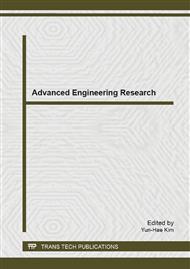p.498
p.502
p.509
p.515
p.519
p.524
p.532
p.536
p.540
The Application of CFZ-Si Monocrystal Material in Photovoltaic Field
Abstract:
As the main substrate materials for solar cell, Czochralskisilicon (CZ-Si) has more crystal defects, higher impurities content and so on, which limit the further improvement of conversion efficiency (h). Floating zone melting silicon (FZ-Si) has excellent performance but the feed rod cost is much higher, so it is hardly used for solar cell widely. To solve this problem, we developed CFZ silicon monocrystal (CFZ-Si). First the poly was made into poly rod withΦ110~Φ130mm by CZ process and then made into CFZ-Si by FZ method. During FZ process, the resistivity is controlled by gas doping and the process is adjustable. CFZ-Si combines advantages of CZ-Si with FZ-Si. It has less crystal defects, lower impurities content especially oxygen content (<0.2 ppm) and excellent consistency of axial resistivity. Meanwhile, poly rod used has lower price and easier fabrication, so CFZ-Si cost is much lower and the further cost reduction is easy. Therefore, CFZ-Si has significant comprehensive advantages and broader prospect in the future photovoltaic field.
Info:
Periodical:
Pages:
519-523
Citation:
Online since:
April 2014
Authors:
Keywords:
Price:
Сopyright:
© 2014 Trans Tech Publications Ltd. All Rights Reserved
Share:
Citation:


